#Diabetes Mellitus Treatment In Ayurveda
Text
Guide to choose Ayurvedic Medicine of Diabetes
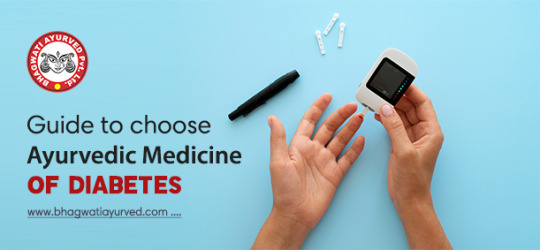
Diabetes is referred to in Ayurveda as "Madhumeha" or "Prameha," and it is viewed as a persistent metabolic disease that throws off the equilibrium between the "Kapha" and "Pitta" doshas. According to Ayurveda, diabetes is a metabolic disorder marked by excessively high blood glucose levels brought on by insufficient sugar metabolism.
Guide to choose Ayurvedic Medicine of DiabetesIn Ayurveda, there are numerous varieties, including Vataja, Pittaja, and Kaphaja Madhumeha. Each variety is distinguished by a unique set of symptoms and the function of a distinct dosha. Ayurvedic treatment aims to balance the doshas and regulate blood sugar levels through dietary modifications (including the use of herbs like Jamun and Gudmar), Panchakarma therapies for detoxification, stress reduction, and lifestyle improvements (including the use of herbs). While Ayurveda provides thorough approaches to managing diabetes, it is best used in conjunction with mainstream medical care. Patients should continue to monitor and manage their condition under the close supervision of their physicians.
With a focus on balancing the body's energy, Ayurvedic approaches to diabetes care include dietary adjustments, lifestyle alterations, and the use of herbal medicines. One of the greatest Ayurvedic Medicine of Diabetes is the Diabetes Care Pack from Bhagwati Ayurved; it will assist you in controlling your blood sugar levels. The most effective ayurvedic medication for diabetes is this one.
Benefits
Adequate control is maintained over dangerous cholesterol levels, and blood sugar levels remain steady.
Enhances liver function, facilitates weight control, helps maintain blood pressure within a healthy range, and facilitates digestion.
Enhances Insulin Efficiency
What Is the Ayurvedic Diabetes Treatment Process?
Diabetes and ayurvedic treatment go hand in hand. Ayurveda is an alternative medicine system that prioritizes the general health and well-being of the patient over the treatment of individual ailments. The aim of this project is to deal with the problem at its source.
Diabetes is known as madhumeha in Ayurvedic medicine, which translates to "sweet urine" in English. Vata Prameha is the term used to describe diabetes mellitus. It manifests as an imbalance in the Vata Dosha, one of the three functioning energies in the body. Kapha Prameha is another name for the medical condition known as diabetes insipidus. The imbalance in the Kapha Dosha is the reason behind this.
Treatment of diabetes based on Ayurvedic principles
Ayurveda is a promising tool in the battle against diabetes and other health conditions because of its integrative nature. Ayurveda suggests employing multiple strategies. Ayurvedic-based treatments are a component of the management strategy.
The detoxification process can be accelerated using a variety of therapies, which helps the body feel more renewed. These are helpful in cases of severe diabetes.
Changing one's diet can aid in the control of diabetes.
Changing key aspects of one's lifestyle can help control diabetes more effectively.
Your primary objective should be to maintain a healthy lifestyle above everything else. Establishing a regular workout schedule can assist with this. Joining a gym, avoiding particular meals, and include bitter fruits in your diet are all potential remedies. Astringent fruits and vegetables, such as bitter gourd and gourd, can help regulate blood sugar levels.
From an Ayurvedic perspective, managing diabetes
If you've been looking for a place to receive an effective Ayurvedic therapy for diabetes, have your treatment by Bhagwati Ayurved and their Medicine of Diabetes in Ayurved. Bhagwati Ayurved skilled Ayurvedic practitioners has made it feasible for them to consistently give patients the finest care possible by customizing their therapies to meet each individual's demands and situations. There are many more Ayurvedic shop in India, but Bhagwati Ayurved is one of the most well-known and prestigious. For many years, it has assisted individuals in achieving and sustaining holistic wellness. The customized therapies prescribed by the medical professionals significantly increase the chance that blood glucose levels will stay normal when paired with consistent exercise and yoga, a low-carb diet customized for each patient, and little stress in daily life.
#Ayurvedic Medicine Of Diabetes#Ayurvedic Medicine for Diabetes#Ayurvedic Treatment of Diabetes#Medicine Of Diabetes In Ayurved
0 notes
Text
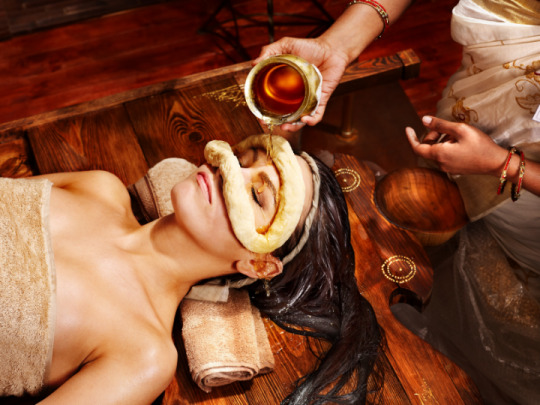
ayurvedic eye treatment in kerala
Diabetic Retinopathy Ayurvedic Treatment At Matha
Matha was the first ayurvedic hospital to chart out a new direction in ayurvedic treatment of diabetic retinopathy, which is now widely accepted and followed by all the ayurvedic physicians treating diabetic retinopathy.
Eye treatments at Matha have methods to preserve existing eyesight for diabetic retinopathy conditions. DR is caused due to prolonged high blood glucose levels. In diabetic eye disease, abnormal blood vessels develop that can break, bleed, and leak fluid. Sometimes tiny bulges called microaneurysms may protrude from the vessel walls. This leads to leakage or oozing of fluid and blood into retina. This fluid causes edema in the central part of macula leading to diabetic macular edema. Regaining the lost ability to see depends on the clinical stage when a patient starts treatment. It is always important for a patient to start treatment as early as possible. It is also very important to maintain blood glucose, blood pressure and blood cholestrol levels. ayurveda treatment for diabetic retinopathy takes around 14 to 16 days. The clinical-stage when medications are started is a very crucial factor. know more about ayurveda treatments for diabetic retinopathy.
Systematic ayurvedic cure for diabetic retinopathy has three benefits:
It prevents the onset
It preserves the existing vision
It regains lost vision.
The stage when a patient starts treatment is very crucial. The outcome of treatment depends on it. This condition develops in anyone who has type 1 or type 2 diabetes. Type 1, is also known as insulin-dependent diabetes. It is characterized by beta-cell destruction. It leads to absolute insulin deficiency. On the other hand, Type 2 is characterized by insulin resistance. This may be due to an insulin secretory defect that may lead to relative insulin deficiency. The longer a person has diabetes and the less controlled his blood sugar is more likely are his chances to develop this eye complication. Diabetes mellitus destructs tissue surrounding the retina, including optic nerves. Retinopathy impairs optic nerves by damaging its conduction as well as integrity.Earlier the treatment, better the results. Matha had identified Diabetic Retinopathy as a core focus area right from its inception. Matha is the first ayurvedic treatment centre to introduce a protocol for the specialized screening, prevention, and treatment program for diabetic retinopathy.
youtube
Systematic ayurvedic cure for diabetic retinopathy
Eye treatments at Matha have methods to preserve existing eyesight for diabetic retinopathy conditions. Matha is the first ayurvedic treatment centre to introduce a protocol for the specialized screening, prevention, and treatment program for diabetic retinopathy.
Our focus is on providing the best ayurvedic treatment to patients
Our facilities are designed and built for middle class Indian patients.
Our Kitchen provides veg diet suitable for ayurveda and yoga.
Matha is not a research Institute. We do not conduct research on our patients.
We prepare herbal medications in our own GMP certified manufacturing unit.
Book Your Consultation Now

There are two typical types of retinopathy. They are Non-proliferative diabetic retinopathy (NPDR) and Proliferative diabetic retinopathy (PDR).
Non-proliferative diabetic retinopathy (NPDR)
NPDR (Non-proliferative diabetic retinopathy) is milder than PDR. Here, the blood vessels become congested. The blood flow slows down. Vessel walls become thickened most by deposits. Changes to properties of the vessel wall contribute to this thickening. Blockages also develop in the blood flow. This develops Branch retinal venous occlusion (BRVO) or Branch artery occlusion. Here, high cholesterol (hypercholesteremia) is also an extra contributing factor. This occlusion may also happen in the central retinal artery. This specific condition is Central retinal artery occlusion. If it happens in the central retinal vein, it is central retinal venous occlusion (CRVO).
CRVO is very serious and the patient may feel a sudden loss of vision. In NPDR, there will be a tendency for small haemorrhages. Small dots and blots of haemorrhages are also seen in most cases. Here, there is an involvement of Kapha also. Actually, Kapha is vitiating pitta and raktha.
The very characteristic properties of Kapha increases. These are Snigdha, guru, pichila etc. and this, in turn, affect pitta. Hence, the characteristic properties of pitta get damaged. The Sara and Drava properties of pitta and raktha become decreased. So, the changes mentioned above develop. Sedentary lifestyles, lack of exercise, and excessive sleep increase the properties of Kapha. Daytime sleep, excessive intake of curd, deep-fried items, etc. also increases Kapha. Vitiation of pitta happens by this Kapha and thereby raktha. This affects consistency and the free flow of blood. There will be deposits on blood vessels and blockages in the veins or arteries of the retina. Here, treatment aims to control Kapha dominance and protect the properties of pitta. Moderate physical exercise (other than head down postures) is very good. Using suitable oil for head massage and nasal drops etc are very good.
Doctors use medicines in the form of Eyewash and eye drops. Triphala, Yashti, Darvi etc are very good for the preparation of eyewash and drops. In diet, avoid all types of heavy and oily food. Instead, add Steamed vegetables, leafy vegetables, sprouted pulses. Systematic ayurvedic management protects against visual impairment in this stage. But it should be by an expert hand only.
youtube
PDR (Proliferative diabetic retinopathy)
In PDR, there will be leakages and haemorrhages from the blood vessels of the retina. In severe conditions, it may penetrate into the vitreous (vitreous haemorrhage). Here, the vitreous fluid also becomes spoiled. As a result of vast haemorrhage, there will be hypoxia (anemia) of the retina. These damages the function of retinal cells. New collateral blood vessels may develop to compensate for the hypoxia. This condition is neovascularization. But these blood vessels may be very weak leading to easy bleeding. This makes the situation worse.
In PDR, there will be blood clot deposits on the retina. Here, pitta and raktha are the dominant factors. Factors that increase the properties of pitta is capable of developing this stage. Examples are working on laptop and mobile screen for a long time. Working late nights and lack of sleep also support the development of this stage. Exposure to bright light or sunlight is also dangerous. Exposure to excessive travel, especially in sunlight, etc. are not good.
In food habits, hot and spicy items are the worst. Deep-fried items, sour tasted items such as pickles are contributing factors. Pitta prakriti patients are more susceptible to PDR. External factors such as summer days, windy days, are also contributing factors. Even mental stress and strain are capable of developing PDR in a diabetic patient. There are situations when an NPDR can evolve to PDR. One instance is when NPDR takes more pitta dominant food items. Another instance is when an NPDR patient undergoes the above explained habitual factors.
Maculopathy is a condition where pathological changes get concentrated in the macular area. In maculopathy, there will be the encroachment of blood vessels to the macular area. Bleeding to the macula is also common. When there is an accumulation of edema fluid in the macular area, it becomes macular edema. Deposits in the macula is another common pathological change. Maculopathy is very very serious and vision loss is almost inevitable if not treated in time. In PDR, the foremost aim of management is to arrest the bleeding. For this, total physical rest is necessary. Never go for heavy physical exercise as a part of diabetic control. This is very important. Adopt only very mild and selective postures as per the direction of an expert. Avoid exposure to bright light and focus on light sources. Selective oil for head massage is very good.
The drugs used for the medication of this oil should have pitta samana properties. This is to control the dominance of pitta. Amla, useera, Chandana, yashti etc are examples. Among food items, avoid too sour tasted items. Too many spicy items are also dangerous. Fleshy and watery vegetables such as cucumber are preferable. Use Protein-rich vegetables and sprouted spices. Natural Cold drinks such as amla water are good for drinking purposes. Water boiled with useera, dry amla is also very good.
Here, systematic level ayurvedic treatment is necessary. Sirodhara, sirolepanam, netrasekam, vitalakam, etc are the treatment procedures. The medicines for these procedures should be very selective. An experienced ayurvedic ophthalmologist can decide it for you. This will help to protect your eyes and vision.
youtube
Three stages in ayurveda treatment of diabetic retinopathy
Matha was the first ayurvedic hospital to chart out a new direction in ayurvedic treatment of diabetic retinopathy, which is now widely accepted and followed by all the ayurvedic physicians treating diabetic retinopathy.
1
The first stage of diabetic retinopathy starts as a complication of diabetes mellitus. It has no warning signs before onset. Proactive diabetic patients undergo regular eye checkups. Even if they have no sight problems. This helps to identify symptoms even before the start of loss of visual perception. We have identified the initial symptoms of retinopathy from past treatment experiences. Mild headache and eye strain while reading is main among them. Strain while working on the computer and watching T.V come next. Fullness is a warning sign. So is the heaviness of head and eye, particularly in the early morning. Hypersensitivity to bright light and watering of the eyes are also typical symptoms. Getting the opportunity to start treatment at this early stage is valuable. It helps prevent the disease altogether. Matha follows proven ayurvedic treatments for diabetic retinopathy in this stage. According to ayurvedic science, this is the initial stage of Kapha predominance. It is also known as Nethrabhyshyandha. The line of treatment is sira-sodhanam. Treatments like Nasyam, Gandoosham, kablam, etc. are more preferable than ophthalmic applications.
2
The second stage of diabetic retinopathy happens if it is not controlled during the first stage. Extend of this progress depends on the various contributing factors, described earlier. From our experience, there are typical symptoms at this stage also. They are blurring of eyesight and metamorphopsia. Burning sensation in the eye and photophobia are also seen. The primary pathological change seen in this stage is the dilation of vessels. Retinal vessels become congested. Blockages happen in the microvascular system of the retina. Retinal edema, hemorrhages, exudates, and neovascular changes are also common. Treatments starting in the third stage concentrate on two distinct aspects. A primary aim is to preserve and protect the existing ability to see. The second aim is to regain lost vision. According to Ayurveda, pitta is the predominant dosha in this stage. Pittasamana must be the line of treatment. The treatments done are Sirodhara, netrasekam, vitalakam aschotanam, and thalam. Strict dietary restrictions are also needed. Medication and diet control are not enough at this stage. Other precautions and care are also needed. For e.g., habitual factors like head bath, sleep, journey and abhyanga oil application. Only an experienced ayurvedic ophthalmologist can do it. Systematic treatment at this stage avoids further vision loss and complications. Matha has successful treatments to protect the eyesight of affected patients.
Ayurveda treatment for diabetic retinopathy is a very wise mix of preventive and curative measures. during the first and second stages.
3
In the third stage, patients experience severe problems. Macular hole, retinal detachment, and other degenerative changes are main among them. The disease has now turned to a complication. This happens when retinopathy is not treated in the second stage. Continuation of etiological factors is another reason for proceeding to the third stage. Now, a strict line of treatment is not possible. Ayurveda treatment for diabetic retinopathy varies according to complications. For e.g., Retinal detachment can happen when abnormal blood vessels associated with diabetic retinopathy stimulate the growth of scar tissue, which pull the retina away from back of eye. For complications of detachment, treatment is on a Vata predominant approach. Pitta is an important treatment consideration for neo-vascularisation. For fluid accumulation, Kapha is the primary treatment factor. Systematic and high-level ayurvedic treatments are to be tailor-made for each specific complication. Confirmation of expected results happens only after a detailed assessment of the patient.
#yoga#backpain#kerala#ayurvedalifestyle#panchakarma#ayurveda treatment#ayurveda#diabetes#frozen shoulder#migraine#Youtube
0 notes
Text
Best Ayurvedic Treatment For Diabetes

Best Ayurvedic Treatment For Diabetes Explore traditional Ayurvedic remedies tailored to manage diabetes naturally, targeting root causes and promoting holistic wellness. Embrace herbal formulations, dietary adjustments, and lifestyle modifications to regulate blood sugar levels and improve overall health. Ayurveda offers personalized approaches that prioritize balance and harmony for the long-term management of diabetes mellitus.
0 notes
Text
We humans often understand




























We humans often understand
This creation of life in this world is a miracle of nature and we humans are the custodians of the whole world.
Whereas friends we can't treat ourselves
We have to depend on others even for food
When will the trees bear fruit? When will a deer make it easier for me to hunt so that I can cook it and eat it?
Friends, I myself have been suffering from sugar disease for many years.
no medicine is working for me
And I'm writing with my head held high
We humans are the protectors of the whole world
While I live in our present energy-conquering civilization, I do not understand the chemical reactions in my body.
And I am writing very big things, we humans are the protectors of the whole world, my friends.
Well I'm in a lot of trouble guys
Hey friends, can you give me some suggestions to get rid of this problem of sugar disease?
What should be done to get protection from sugar disease?
Get rid of type 2 diabetes - Say Goodbye to Medicines
sugar.fit
No fad diets or intensive lifestyle changes.We reverse diabetes with simple habits changes
Control Sugar By Natural Way - ways to reduce blood sugar
cowurine.com
Today, 77 million adults are living with diabetes ( diabetes mellitus ) in India. And it’s no surprise that the numbers are predicted to increase to 134 million by 2045.
The sole treatment for diabetes is AYURVEDA. The ayurvedic approach for treatment varies from person to person depending on the severity of the disease. Ayurveda works on a person’s three doshas - The Vata, Pitta, and Kapha which maintains our overall health. We are glad to say that we have seen so many positive results through our treatments by the combination herbs which provides-
Insulin support to regulate glucose levels
Better and healthy glucose metabolism.
Support healthy living.
Treat type 1, type 2 and gestational diabetes with our Ayurvedic solutions.
Regulate your blood sugar levels with our herbal supplements naturally with insulin resistance and prevent prameha(diabetes), Ikshumeha ( glycosuria), madhumeha( diabetes mellitus), Bahumutrata (polyurea) and nadidaurbalya ( nervous weakness).
Diabetes Tips & Strategies - Natural Diabetes Management
DIABETES FREE LIFE
Explore our resources for a healthier diabetic lifestyle. Get informed & inspired! Learn about natural and effective ways to manage diabetes. Start your journey! Clinically Proven. Diabetes Reversal Program. 21 day Reversal Program.
Treatment For Diabetes · Diabetes Reversal Plan · Food Preparation Tips · Diabetes Articles
Diabetes prevention: 5 tips for taking control
Mayo Clinic
https://www.mayoclinic.org › in-depth › art-20047639
1. Lose extra weight · 2. Be more physically active · 3. Eat healthy plant foods · 4. Eat healthy fats · 5. Skip fad diets and make healthier choices.
What is the prevention of sugar disease?
Diabetes
A healthy diet, regular physical activity, maintaining a normal body weight and avoiding tobacco use are ways to prevent or delay the onset of type 2 diabetes. Diabetes can be treated and its consequences avoided or delayed with diet, physical activity, medication and regular screening and treatment for complications.5 Apr 2023
How do you maintain sugar disease?
Other tips include:
Keep track of your blood sugar levels to see what makes them go up or down.
Eat at regular times, and don't skip meals.
Choose foods lower in calories, saturated fat, trans fat, sugar, and salt.
Track your food, drink, and physical activity.
Drink water instead of juice or soda.
Actually diabetes means sugar disease is the cause of trouble for many people.
The efforts of everyone in this country and abroad to come together to pay attention to this sugar disease has proved necessary in today's civilization.
Translate Hindi
हम इंसान अक्सर समझते है
यह इस दुनिया में जीवन सृष्टि प्रकृति की करिश्मा है और हम इंसान ही है पूरी दुनिया का रखवाला
जबकी दोस्तों हम अपना उपचार खुद नहीं कर सकते
हमें खाना खाने के लिए भी दूसरों पर निर्भर रहना पड़ता है
कब पेड़ों फल देगा कब एक हिरण मुझे शिकार करने की सुविधा बना देगा ताकि मैं उसे पकाकर खा पाऊं
दोस्तों मैं खुद शुगर डिजीज से काफी साल परेशान हूँ
कोई दवाई मेरा काम नहीं आ रहा है
और मैं सर ऊचाकर लीख रहा हूँ
हम इंसान ही है पूरी दुनिया का रखवाला
जबकी मैं हमारी इस आज की एनर्जी जीत करने वाली सभ्यता में रहकर मेरी शरीर की केमिकल विक्रिया को समझता नहीं हूँ
और मैं बहुत बढ़ी बढी बात लीख रहा हूँ हम इंसान ही है पूरी दुनिया का रखवाला मेरे दोस्तों
खैर मैं बहुत परेशान में हूँ दोस्तों
हे दोस्तों इस शुगर डिजीज की तकलीफ से निकालने का कुछ सुझाव आप मुझे दे सकते हो
शुगर डिजीज में से रक्षा पाने के लिए क्या करना चाहिए
टाइप 2 मधुमेह से छुटकारा पाएं - दवाओं को अलविदा कहें
चीनी.फिट
कोई सनक भरी डाइट या गहन जीवनशैली में बदलाव नहीं। हम साधारण आदतों में बदलाव के साथ मधुमेह को उलट देते हैं
प्राकृतिक तरीके से शुगर कंट्रोल करें - ब्लड शुगर कम करने के उपाय
काउयूरिन.कॉम
आज, भारत में 77 मिलियन वयस्क मधुमेह (डायबिटीज़ मेलिटस) से पीड़ित हैं। और इसमें कोई आश्चर्य की बात नहीं है कि 2045 तक यह संख्या बढ़कर 134 मिलियन हो जाने का अनुमान है।
मधुमेह का एकमात्र इलाज आयुर्वेद है। रोग की गंभीरता के आधार पर उपचार के लिए आयुर्वेदिक दृष्टिकोण व्यक्ति-दर-व्यक्ति भिन्न होता है। आयुर्वेद व्यक्ति के तीन दोषों - वात, पित्त और कफ पर काम करता है जो हमारे समग्र स्वास्थ्य को बनाए रखता है। हमें यह कहते हुए खुशी हो रही है कि हमने जड़ी-बूटियों के संयोजन से अपने उपचार के माध्यम से बहुत सारे सकारात्मक परिणाम देखे हैं जो प्रदान करते हैं-
ग्लूकोज के स्तर को नियंत्रित करने के लिए इंसुलिन समर्थन
बेहतर और स्वस्थ ग्लूकोज चयापचय।
स्वस्थ जीवन का समर्थन करें.
हमारे आयुर्वेदिक समाधानों से टाइप 1, टाइप 2 और गर्भकालीन मधुमेह का इलाज करें।
प्राकृतिक रूप से इंसुलिन प्रतिरोध के साथ हमारे हर्बल सप्लीमेंट्स के साथ अपने रक्त शर्करा के स्तर को नियंत्रित करें और प्रमेहा (मधुमेह), इक्षुमेहा (ग्लाइकोसुरिया), मधुमेहा (मधुमेह मेलिटस), बहुमुत्रता (पॉलीयूरिया) और नादिदौर्बल्या (तंत्रिका कमजोरी) को रोकें।
मधुमेह युक्तियाँ और रणनीतियाँ - प्राकृतिक मधुमेह प्रबंधन
मधुमेह मुक्त जीवन
स्वस्थ मधुमेह जीवन शैली के लिए हमारे संसाधनों का अन्वेषण करें। सूचित एवं प्रेरित हों! मधुमेह को प्रबंधित करने के प्राकृतिक और प्रभावी तरीकों के बारे में जानें। अपनी यात्रा शुरू करें! नैदानिक साबित। मधुमेह उत्क्रमण कार्यक्रम. 21 दिवसीय उत्क्रमण कार्यक्रम।
मधुमेह के लिए उपचार · मधुमेह रिवर्सल योजना · भोजन तैयार करने की युक्तियाँ · मधुमेह लेख
मधुमेह की रोकथाम: नियंत्रण रखने के लिए 5 युक्तियाँ
मायो क्लिनिक
https://www.mayoclinic.org › गहराई › कला-20047639
1. अतिरिक्त वजन कम करें · 2. अधिक शारीरिक रूप से सक्रिय रहें · 3. स्वस्थ पादप खाद्य पदार्थ खाएं · 4. स्वस्थ वसा खाएं · 5. सनक आहार छोड़ें और स्वस्थ विकल्प चुनें।
शुगर रोग से बचाव क्या है?
मधुमेह
स्वस्थ आहार, नियमित शारीरिक गतिविधि, शरीर का सामान्य वजन बनाए रखना और तंबाकू के सेवन से बचना टाइप 2 मधुमेह की शुरुआत को रोकने या विलंबित करने के तरीके हैं। मधुमेह का इलाज किया जा सकता है और इसके परिणामों को आहार, शारीरिक गतिविधि, दवा और जटिलताओं के लिए नियमित जांच और उपचार से टाला या विलंबित किया जा सकता है। 5 अप्रैल 2023
आप शुगर की बीमारी को कैसे बनाए रखते हैं?
अन्य युक्तियों में शामिल हैं:
यह देखने के लिए अपने रक्त शर्करा के स्तर पर नज़र रखें कि किस कारण से यह ऊपर या नीचे जाता है।
नियमित समय पर खाएं और भोजन न छोड़ें।
कम कैलोरी, संतृप्त वसा, ट्रांस वसा, चीनी और नमक वाले खाद्य पदार्थ चुनें।
अपने भोजन, पेय और शारीरिक गतिविधि पर नज़र रखें।
जूस या सोडा की जगह पानी पियें।
सच में मधुमेह मतलब शुगर डिजीज काफी लोगों का परेशानी के कारण है
यह देश विदेश महादेश सबकी कोशिश इस शुगर डिजीज ओर ध्यान देकर एकत्र हो जाना आज की सभ्यता में जरूरी साबित हो गया है
0 notes
Text
Holistic Healing: Ayurvedic Treatment for Diabetes Mellitus
Explore the natural approach to managing Diabetes Mellitus through Ayurveda. Our comprehensive Ayurvedic treatment focuses on balancing your body's energies, enhancing digestion, and promoting overall well-being. Discover personalized remedies, dietary guidance, and lifestyle modifications tailored to address the root cause of diabetes. Embrace a holistic path to wellness with our Ayurvedic experts, providing a time-tested approach to manage Diabetes Mellitus effectively. Prioritize your health and embark on a journey towards balance and vitality.
0 notes
Text
Ayurvedic Prevention Techniques for Lifestyle Disorders

In our busy modern lives, health issues caused due to stress, inactivity, and poor diets have become common. But in Ayurveda, there's a guide to help prevent these problems. Ayurveda, a traditional remedy for staying healthy, has tricks to tackle the challenges of modern life. The blog ‘Ayurvedic Prevention Techniques for Lifestyle Disorders’ will show you how Ayurvedic tips can fit into your daily routine. From simple habits to special treatments, Ayurveda helps keep you healthy and balanced. Together with the best Ayurvedic hospital in Dubai, let's explore how Ayurveda can be your friend in staying strong, happy, and well.
What are Lifestyle Disorders?
Lifestyle disorders, which are sometimes referred to as Non-communicable diseases (NCDs) in health terms, constitute a group of various chronic diseases whose development is predominantly predetermined by one’s lifestyle. These are non-infectious and their manifestation is mainly from chronic exposure to various other factors including poor diet, sedentary lifestyle etc. Lifestyle disorders include types of diseases such as cardiovascular illnesses, type 2 diabetes mellitus, obesity phenomena and some sorts of cancer. Different from single causes’ disorders, lifestyle illnesses are multifactorial where genetic predisposition as well as environmental factors play a role and therefore respond well to modification of lifestyles.
The modern world is a fast-paced one, and this has led to the rise of lifestyle disorders in contemporary times. These health challenges are linked to sedentary jobs, the use of processed foods, and always being hooked up or connected to bots. Unlike some conditions, lifestyle disorders are preventable and controllable through intentional attempts to embrace healthy practices. With this knowledge of how daily decisions affect general welfare, people can actively reorient their lifestyles to minimise the risk of these disorders and attain lasting health and well-being.
What are the Common Lifestyle Disorders?
You may have heard about lifestyle disorders. Let us look at them in detail a bit:
Cardiovascular Diseases: These are conditions affecting the heart and blood vessels, such as heart disease and stroke, which are results of a sedentary lifestyle, unhealthy diet, smoking, and excessive alcohol consumption.
Type 2 Diabetes: This is a form of diabetes that is often associated with obesity, lack of exercise, and poor dietary choices.
Obesity: This is a condition of excessive body weight due to an imbalance between calorie intake and expenditure, often stemming from poor dietary habits and insufficient physical activity.
Hypertension (High Blood Pressure): High blood pressure levels are mainly caused due to factors like stress, a high-sodium diet, and lack of exercise.
Sleep Disorders: Conditions such as insomnia and sleep apnea can be influenced by lifestyle factors like irregular sleep patterns and excessive screen time.
Metabolic Syndrome: A cluster of conditions, including abdominal obesity, high blood pressure, high blood sugar, and abnormal cholesterol levels, often related to poor lifestyle choices.
Chronic Respiratory Diseases: Conditions like chronic obstructive pulmonary disease (COPD), are often exacerbated by smoking and environmental factors.
How does Ayurveda help to Prevent Lifestyle Disorders?
If you find it difficult to prevent lifestyle disorders, we are here to help you with the best curative treatments in Dubai. Before that, read this blog as this blog is specially for you to understand and practice effortless Ayurvedic practices to stay away from common lifestyle disorders.
Dincharya
Nidra
Vyayama
Ahara
Panchakarma
Herbal Remedies
Dincharya:
The Dincharya is the daily routine that follows nature’s rhythms in Ayurvedic principles. This practice involves several activities that are undertaken at a given time of the day to achieve physical and mental harmony. Waking up in the morning and doing some rites such as tongue scraping, oil pulling etc., are an important part of Din Chariya. This practice helps maintain overall wellness through improved digestion, balancing the energy system and developing a sense of discipline for lifestyle.
Nidra:
Ayurveda treats sleep as a significantly vital parameter. In Ayurveda, one of the three pillars that go along with health is nidra (sleep). Sleep, restful and adequate sleep is necessary for the process of revitalization as well as repair. According to the Ayurvedic guidelines, people are advised to sleep as early as possible (before 10 p.m.) and wake up in the morning hours. Sound and restorative sleep can be achieved by establishing a suitable sleeping environment as well as following relaxation practices, which promote physical and mental health.
Vyayama:
In Ayurveda, vyayama or regular exercise is very important to prevent lifestyle disorders. The focus is on the inclusion of exercises that are compatible with one’s body constitution or dosha. Ayurveda advocates for exercise that balances Vata, Pitta and Kapha doshas. For example, people with predominant Vata dosha can benefit by practicing grounding activities such as yoga while other individuals having a Pitta constitution often derive relief from cooling exercises like swimming. Physical activity provides a good defence against many lifestyle disorders by improving the blood system, metabolism and general vitality.
Ahara:
Ahara, diet is also a foundation stone of Ayurveda for maintaining health without diseases. Ayurveda dietary doctrines are based on individual constitution, referred to as Prakriti and the balance of doshas. You must include fresh, seasonal and locally grown foods in your diet. Foods are classified according to taste (rasa), heating or cooling properties (virya) and post-digestive effects in Ayurvedic medicine. Many lifestyle disorders can be prevented by following a balanced and personalized diet to support digestion, build the immune system, and avoid imbalances.
Panchakarma:
Panchakarma can be called the process of detoxification and rejuvenation in Ayurveda. It includes five treatment methods called the Vamana, Virechana, Basti, Nasya and Raktamokshana. The removal of accumulated toxins by panchakarma and the restoration of balance in doshas. This method of detoxification is essential in the prevention and treatment of lifestyle disorders because it eliminates deeply rooted toxins as well as enhances general health.
Herbal Remedies:
Ayurveda utilizes herbs to prevent and treat several health conditions by their healing power. Herbal remedies are customized based on one’s dosha, imbalances and individual needs. The most common herbs such as turmeric, ginger, ashwagandha and Triphala have shown anti-inflammatory effects along with being adaptogenic detoxifiers. These herbs correct the already existing imbalances and act protective against lifestyle disorders. The herbal formulations recommended by Ayurvedic practitioners support digestion, enhance immunity as well as contribute to better general health.
#ayurvedic center in dubai#postnatal clinic#ayurvedic hospital dubai#natural health#panchakarma#lifestyle disorder
0 notes
Text
Prameha (Diabetes) and it’s Management through Ayurveda - AyurMedia
🌿 Explore Prameha (Diabetes) Symptoms, Causes, And Treatment.
From personalised dietary guidance to holistic lifestyle practices, discover a natural path to balance and vitality. 🍃
Read in detail about Prameha (Diabetes) and it’s Management through Ayurveda...
.
.
.
#DiabetesManagement#HolisticHealth#ayurveda#yoga#ayurvedalifestyle#health#ayurvedic#healthylifestyle#ayurvedalife#diabetes#ayurvedaeveryday#ayurvedicmedicine#natural#india#meditation#healthyfood#vegan#organic#fitness#ayurvedafood#skincare#healthy#nature#ayurvedatreatment#vata#medicine#kapha#herbal#pitta
0 notes
Text
diabetesDiabetic Retinopathy — Ayurvedic Perspective & Treatment

Hyperglycemia is defined as elevated levels of sugar, or glucose, in the blood. Mellitus hyperglycemia is the starting point for the development of diabetic retinopathy in uncontrolled diabetes.
The following are the mechanisms through which hyperglycemia causes Microangiopathy:
Cellular damage: Hyperglycemia causes damage to retinal and endothelial cells. It also causes pericytes to be lost and the basement membrane of capillaries to thicken.
Changes in haematology and biochemistry: Hyperglycemia is a major factor in the development of Microangiopathy. It also involves an increase in platelet adhesiveness, blood viscosity, and distortion of red blood cells.
Microangiopathy, commonly known as tiny vessel disease, is a type of microvascular illness. Microangiopathy affects the pre-capillary arterioles, capillaries, and venules of the retina. It is the major pathology in diabetic retinopathy caused by hyperglycemia.
Microangiopathy’s effects on diabetic retinopathy include a breakdown of the blood-retinal barrier. A weakened capillary wall causes retinal edoema, haemorrhages, and lipid leaks.
Diabetic Retinopathy and Ayurveda
According to Ayurveda, there is no such condition that directly translates into diabetic retinopathy. Even in the Ashtanga Sangrah and Sushruta, where eye condition is covered in depth, there is no such mention. Few people translate it as Pramehajanya Timira from modern terminology. A name can be translated. However, pathological understanding is crucial. And due of the lack of this pathogenic manifestation, we are unable to help DR patients with Ayurveda.
Ayurveda allows a physician to make decisions regarding an illness based on the participation of the Doshas. Before we can make a choice concerning Dosha in the DR, we must first comprehend several other concepts.
In the case of diabetic retinopathy, we must comprehend the following facts, according to Ayurveda:
Low metabolism /Agni Mandya Blood vessel problems /Rakta Pitta and Vata Rakta
These are two significant points in the context of Diabetic Retinopathy. When we comprehend these, we will have a thorough understanding of the condition.
Agni Mandya / Low Metabolic Rate
According to Modern Biology, metabolism is the body’s ability to burn food for energy production. In Ayurveda, this is referred to as Agni. Diabetes is not the sole cause of retinal alterations.
Diabetes is a metabolic condition in and of itself. Diabetes primarily inhibits sugar metabolism, as well as other things (fats, etc.). However, when it is combined with dyslipidemia and other diseases, the situation worsens. And it is at this moment that diabetes problems become prevalent.
Blood vessel issues/Rakta Pitta and Vata Rakta
Ayurveda distinguishes two conditions: Vata Rakta and Rakta Pitta. These parameters are critical for comprehending the two fundamental features of DR. Infarct (no blood flow to an area) or bleeding from very tiny arteries are the two most serious issues.
Vata Rakta is all about blood supply loss, which could be caused by artery obstruction owing to cholesterol or even inflammation in the artery walls.
Rakta Pitta is concerned with bleeding. When blood heats up, it gathers extra water from the surrounding tissues, resulting in increased blood volume. As a result, blood vessel pressure rises, resulting in bleeding.
So we now have a name for the condition. The next step is to determine Doshas.
Diabetic Retinopathy Is Caused By Doshas
Diabetes is a classic Vata imbalance illness. However, this imbalance begins with the Kapha. But we’re talking about a secondary condition here. And the key issue in this case is the blood. Pitta is the Dosha associated with blood.
As a result, we must exercise caution with all of the Doshas, focusing primarily on the pitta dosha. In general, when all three doshas are present, one of them becomes imbalanced throughout treatment.
Diabetic Retinopathy Ayurvedic Treatment
Now that we have a comprehensive understanding of the issue, we can better differentiate the Ayurvedic treatment options. There are a few key aspects to consider:
Keeping blood sugar under control
Keeping the Agni in Check
Addressing the root cause- In the case of infarcts (Vata Rakta), when bleeding is prominent (Rakta Pitta).
With this three-dimensional approach, we can better deal with Diabetic Retinopathy.
Because the eye is only one of the organs affected by diabetic retinopathy. The eye is at the receiving end. As a result, it is critical to treat the illness on a systemic basis. The main advantage of treating this problem on a systemic level is that a patient can avoid subsequent diabetes complications such as diabetic nephropathy!
This is why, when we treat DR, we assure that we will work on the entire system to achieve complete recovery of your health. Not only the eye.
Ayurveda is the other side of the coin!
When we seek Ayurvedic treatment for an illness, the first question we ask is, “Is it curable through Ayurveda?” The same is true with Diabetic Retinopathy. And now for your question: How effective is Ayurveda in the treatment of diabetic retinopathy?
Ayurveda, without a doubt, can prevent “blindness.” Ayurvedic treatment can certainly halt the progression of your condition. You can also live a normal life. Patients’ vision improves over time.
However, in addition to treatment, we always advise patients to keep taking their diabetes medications. We just add certain Ayurvedic medicines that can assist in controlling blood sugar levels and avoiding illness complications.
Related-
Know more about Ayurveda Diabetes Reversal.
0 notes
Text
Ayurvedic Management of Diabetes Mellitus
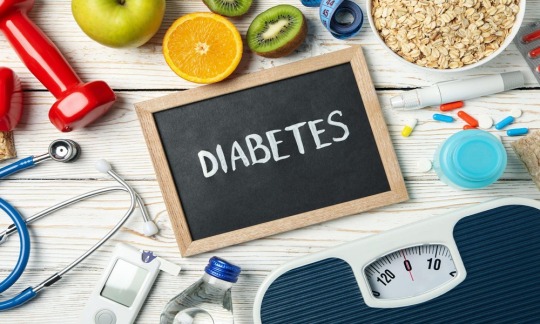
The global surge in diabetes, a condition that challenges our bodies’ resilience, can be attributed to modern Western lifestyles. Excessive sugar consumption, nutrient-poor diets, sedentary habits, and relentless stressors are fuelling this epidemic. In the realm of healing traditions, Ayurveda, the world’s oldest medicine, offers invaluable insights for combating a wide array of ailments. Diabetes, a formidable adversary impacting every facet of our physiology, is regarded as a “maharoga” or major disease in Ayurveda.
Type 1 diabetes, often diagnosed in children and known as juvenile diabetes, is an autoimmune disorder where the body mistakenly attacks its insulin-producing cells, disrupting its ability to regulate blood sugar naturally. This leads to a dearth of nutrients and an inability to convert sugar into vital energy at the cellular level. On the other hand, Type 2 diabetes is an insulin-resistant condition. Although the body may produce insulin, its absorption into cells, where it transforms sugars into energy, is impaired. This type is closely linked to poor dietary choices and sedentary lifestyles, playing a substantial role in the widespread obesity crisis. Are you looking for a path to a transformative journey and wellness? If yes, then at Nimba Nature Cure your search ends. We are known as one of the best ayurveda wellness retreats in Gujarat and offer best ayurveda management of diabetes mellitus treatment in Gujarat. So why wait, when you can immediately start your wellness journey with Nimba.
What causes diabetes?
Genetic Predisposition: Diabetes often runs in families, suggesting a genetic component. If you have a family history of diabetes, you might have an increased risk of developing the condition. Certain genes can make individuals more susceptible to diabetes, but having these genes doesn’t guarantee that you’ll get diabetes. It simply means you’re at a higher risk.
Lifestyle Factors: Unhealthy dietary choices, such as consuming excessive sugar and unhealthy fats, can contribute to the development of diabetes. These foods can lead to weight gain and insulin resistance. Lack of physical activity is another significant lifestyle factor. Regular exercise helps maintain a healthy weight and improves insulin sensitivity. Excess weight gain or obesity, especially around the abdominal area, is closely linked to the development of Type 2 diabetes. Fat cells, particularly in the abdominal region, can release chemicals that promote insulin resistance.
Insulin Resistance: In Type 2 diabetes, the body’s cells become resistant to the effects of insulin. Insulin is a hormone produced by the pancreas that helps regulate blood sugar. As cells become less responsive to insulin, the pancreas tries to compensate by producing more insulin. Over time, the pancreas may not keep up with the increased demand, leading to elevated blood sugar levels.
Autoimmune Response: Type 1 diabetes is an autoimmune condition where the body’s immune system mistakenly identifies the insulin-producing beta cells in the pancreas as foreign invaders and attacks them.
This autoimmune response leads to a deficiency of insulin in the body, as the beta cells are progressively destroyed. People with Type 1 diabetes require lifelong insulin replacement therapy.
Metabolic Syndrome: Metabolic syndrome is a cluster of conditions that often occur together. It includes factors like high blood pressure, elevated blood sugar levels, excess abdominal fat, and abnormal cholesterol levels. Having metabolic syndrome increases the risk of developing Type 2 diabetes. It’s often associated with insulin resistance and is more common in individuals with obesity and sedentary lifestyles. Discover your path to wellness at Nimba Nature Cure, the Best Naturopathy Treatment Centre in Gujarat.
Ayurvedic management of diabetes
Diabetes mellitus, classified as a formidable “Maharoga” in Ayurveda, indeed poses challenges for a complete cure. However, the ancient wisdom of Ayurveda offers a comprehensive approach to diabetes management, harnessing the power of proper diet, lifestyle adjustments, healing herbs, and therapeutic treatments. Ayurveda not only addresses acute symptoms but also aims for relief, balance, and moderation. For those grappling with obesity, Ayurveda’s strategy involves reducing excess fats and eliminating cellular toxins. Emphasis is placed on increased physical activity, encompassing revitalizing practices like yoga and light cardio exercises. Fasting therapies, tailored to one’s constitution and needs, may involve juices, water, or a mono-diet like kitchari.
Ayurvedic detox therapy, known as “panchakarma,” is a cornerstone for cellular cleansing, encompassing transformative treatments like abhyanga (oil massage), purgation, enema, and nasya (nasal therapy). All of these are conducted under the expert guidance of Ayurvedic specialists. For individuals dealing with chronic illness, weakened immunity, or low body weight, Ayurveda focuses on tissue nourishment and immune system fortification to facilitate repair and rejuvenation. Panchakarma detox, which includes nurturing oil enemas, plays a pivotal role in cleansing and revitalizing the body. Additionally, regular Ayurvedic oil massages (abhyanga) and shastikashali pinda swedana (rice bolus massage) are recommended to promote overall well-being. Ayurveda’s holistic approach to diabetes management offers a path to not only control but also enhance one’s quality of life.
Embark on a transformative journey to holistic wellness at Nimba Nature Cure, the best Ayurveda retreat in Gujarat. Experience the rejuvenating power of Panchkarma treatments and discover a path to health and harmony. Book your retreat today.
This blog originally posted here: https://www.nimba.in/ayurvedic-management-of-diabetes-mellitus/
0 notes
Text
Dry Eye Syndrome – How Ayurveda Can Help?

Are your eyes feeling parched and begging for relief? Dry eye, the condition that leaves you yearning for moisture, affects countless individuals worldwide. We will dig into the causes, symptoms, treatments, and lifestyle modifications that will drench your eyes in soothing relief.
What Is Dry Eye Syndrome?
Dry eye syndrome, also known as Kerato-conjunctivitis sicca is one of the most frequently encountered eye diseases characterized by insufficient lubrication or moisture in the surface of the eyes. The disease affects affecting nearly 5-35 % of people worldwide.
It occurs when the eye produces insufficient tears or the tears get evaporated quickly leading to dryness, blurring of vision, and other discomforts.
What Causes Dry Eye?
Tears are produced by certain special glands situated in the eyes. Any factors that lead to instability in the eyes result in dry eyes. The factors contributing to the formation of dry eye are:
Autoimmune disorders.
Environmental conditions such as extreme heat, dust, wind, and moisture.
Excessive use of contact lenses.
Hormonal changes in the body.
Certain medications.
Complications of ocular surgeries.
Excessive use of computers, television, and other gadgets.
Lack of sleep and dehydration.
Dry eye is more prone in patients with diseases such as diabetes mellitus, rheumatoid arthritis, thyroid dysfunction, etc.
Symptoms of Dry Eye
The condition presents with varying severity affecting one or both eyes. The commonly presented symptoms are:
A feeling of dryness or foreign body sensation over the eye.
Redness, burning sensation, and irritation of eyes.
Mucus discharge from the eyes.
Blurred vision.
Sensitivity towards a bright light.
Foreign body sensation over the eyes.
Pain in eyes.
Difficulty in wearing contact lenses.
What is Dry Eye in Ayurveda?
In Ayurveda, dry eye can be correlated with the condition Sushakshipaka. As per Ayurvedic principles, the condition occurs due to the imbalance of vata and pitta dosha resulting in a reduction in tear secretion and changing the quality of tears.
Due to exposure to harsh environmental conditions, excessive straining, inadequate or troublesome sleep, etc, the doshas get vitiated resulting in symptoms like dryness of the eyes, blurring of vision, difficulty in blinking eyes, etc.
How Ayurveda Manages Dry Eye Syndrome.
Ayurveda aims to restore imbalanced Vata and Pitta Dosha and improve the overall health of the eyes. Here are some of the approaches that can be opted for:
Nasyam: Instilling medicated oils or ghee into the nasal passage improves tear production and reduces dryness. Nasyam is considered the best panchakarma treatment for the disease above the neck.
Tarpanam: The procedure in which the medicated ghee is poured into the eye pits and after creating a small dam around the eyes. It nourishes and lubricates the eyes reducing the symptoms.
Parisekam: Eye wash or irrigation is the procedure in which water boiled using medicinal herbs is used for cleansing the eyes.
Snehapana: Internal administration of medicinal supplements like ghee etc helps in reducing the symptoms.
Anjana: The application of collyrium having vata and pitta hara properties is beneficial in the management of the disease.
Eye drops Instillation of ayurvedic medicinal supplements with cooling and lubricating properties.
Along with the above therapies, other external Ayurveda therapies such as Putapaka, Aschotana, Bidalaka, and Shirodhara are useful in the management of dry eye.
Yoga practices can also help to reduce eye strain and also build up the stamina of eye muscles.
Lifestyle Modifications
Drink an adequate amount of water throughout the day to stay hydrated.
Make a conscious effort to blink your eye frequently, especially during screen time or activities that require intense focus.
Take 5-10 minutes of intervals during extended screen time.
Maintain a proper distance between the eyes and the working gadget to avoid straining of eyes.
Adjust the humidity and moisture of the air in heated and air-conditioned rooms.
Use sunglasses or goggles while going outside.
Avoid smoking, allergens, eye rubbing, and other factors that worsen the situation.
Include food rich in vitamin A, leafy vegetables, carrots, fish, and flax seeds.
Conclusion
Ayurveda has been used for many centuries to manage various eye problems including cataract, glaucoma, dry eyes syndrome and in treating various muscular degenerative diseases. At Ayurclinic Melbourne, we provide a systematic analysis of patients followed by various diagnostic procedures to ascertain the level of intensity of the dryness in the eyes. Our expert team of Ayurveda practitioners indulges in various eye care routine practices to achieve the goal of nourishing your vision.
Start your journey towards comprehensive wellness with our unique range of Ayurvedic eye care solutions. For expert ayurvedic consultation and treatment process, call us @ +61 3 9078 2940 and schedule and appointment.
#ayurveda#health#ayurvedicmedicine#eyes#eye health#eye care#massage#melbourne#theraphy#alternative medicine#ayurveda treatment
0 notes
Text
Unraveling Myths, Embracing Facts About Diabetes Mellitus
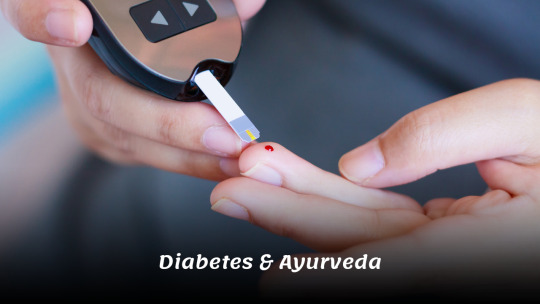
Myth: Too Much Sweet Food Causes Diabetes?
Fact: Diabetes caused by eating too much sweet food is not fully true. Even though eating too many sugary and sweet foods can cause certain types of diabetes, it is not the only thing that can cause it.
Myth: People with diabetes should not eat carbs.?
Fact: Carbohydrates may raise blood glucose levels because the body turns them into glucose for energy.
But carbs can be found in many foods, such as fruit and veggies, which may also be good sources of other nutrients. So, it might not be possible to stay away from all carbs.
Myth: Can diabetes be treated?
Fact: Diabetes can be treated but not cured. Type 1 diabetes, type 2 diabetes, and gestational diabetes have their causes and treatments.
Myth: People who are overweight often get diabetes.
Fact: Being overweight or fat makes you more likely to get type 2 diabetes. Insulin resistance is a situation in which the body's cells do not respond properly to insulin. This can happen when a person is overweight.
Myth: Diabetes makes it unsafe to exercise.
Fact: Exercise can be safe and beneficial for people with diabetes with proper guidance. Physical activity is an important part of managing diabetes. It can help control blood sugar, reduce insulin resistance, lower the chance of heart problems, and improve overall health and well-being.
Myth: People with diabetes can stop taking their medicine once their blood sugar is under control.
Fact: The idea that you can stop taking diabetes drugs once your blood sugar is under control is a myth that can be dangerous. It's important to be clear that diabetes is a long-term disease that can't be fixed, only controlled. Controlling blood sugar is important for the health and well-being of people with diabetes, but it doesn't mean that the disease is gone or they can stop taking their diabetes medicines.
Myth: Ayurvedic treatment for diabetes is helpful.
Fact: The effectiveness of Ayurvedic treatments for diabetes may vary from person to person. Ayurveda can be beneficial for certain health conditions and general well-being, but it is essential to note that it does not offer a definitive cure for diabetes.
0 notes
Text
Causes of Genital Herpes in Patna

Benefits of Ayurvedic Medicine for Diabetes
In the past, diabetes was thought to only affect the wealthy. However, as society has become more pragmatic, we have come to recognise the reality that diabetes is a common disease caused by eating too much sugar. Although numerous non-sugar causes can increase blood sugar levels and cause diabetes, the most important thing is that the condition can be managed and cured entirely by Medicine of Diabetes in Ayurved or a disciplined lifestyle.
Causes of Genital Herpes in Patna Diabetes and Ayurveda
An Ayurvedic term for diabetes is madhumeha, meaning "sweet urine". Vata dosha imbalance causes diabetes mellitus, also known as vata prameha, the most common kind. Kapha prameha, or diabetes insipidus, is another kapha dosha imbalance-related diabetes. The definition comes from Ayurveda, an ancient Indian medicinal system that treats it well. Ayurvedic diabetes treatment generally restores health and vitality by balancing the doshas. The following are some of the components of Ayurvedic Medicine for diabetic's comprehensive approach to diabetic treatment:
Herbal remedies prescribed by Ayurveda doctors are usually crafted from all-natural, ayurvedic substances.
Detox procedures to rid the body of toxins entirely
A balanced diet is the first and most important line of defence against diabetes
Since diabetes is largely a lifestyle disease, it is imperative that people make the necessary changes, such as getting more active and less sedentary, to manage the disease effectively
Apart from these, well-researched ayurvedic Medicine of Diabetes in Ayurved can help restore health. Natural, easily accessible goods such as neem, jamun seeds, bael, cumin, ginger, and fenugreek may aid in decreasing blood glucose levels.
Treatment using All-Natural Substances
When treating illness, Medicine of Diabetes in Ayurved looks to nature for guidance. Natural, sometimes uncommon, but always present herbs and other substances are the building blocks of ayurvedic therapy. Here are a few examples of these all-natural herbs:
Amla, or Indian gooseberry, is filled with antioxidants and vitamin C, which aids in insulin absorption and sugar regulation.
Triphala, which consists of amla, bibhitaki, and haritaki, promotes a healthy gut and lowers oxidative stress.
Natural spices like fenugreek seeds, cinnamon, drumsticks, and aloe vera aid in sugar regulation and digestive health.
Nuts and whole grains are rich in fibre and healthy fats, which lower bad cholesterol and help keep blood sugar levels stable.
One component of the Ayurvedic approach to treating numerous illnesses is panchakarma therapy, a component of the Ayurvedic treatment regimen. Finishing the procedure typically takes a week or two, but it aids in detoxification. Accordingly, ayurvedic treatment necessitates patience and devotion.
ConclusionMedicine of Diabetes in Ayurved offer an all-natural and holistic method of diabetes management. Including these herbs in your diabetes control approach should only be done after consulting with a trained Ayurvedic practitioner or healthcare expert at Bhagwati Ayurved. To improve diabetes management and general health, using these herbs with a healthy diet, regular exercise, and close monitoring of blood sugar levels is recommended. Remember that Ayurveda is best utilised in tandem with modern medicine instead of it. Also, you can know the Causes of Genital Herpes in Patna at Bhagwati Ayurved.
#HIV Treatment Center in Maharashtra#Doctor for HIV Treatment in Maharashtra#HIV Treatment Clinic in Bihar#HIV Treatment in Karnataka
0 notes
Text
Get Ayurvedic Treatment of Diabetes in Kundan Nagar Clinic
Introduction: Diabetes mellitus, commonly known as diabetes, is a chronic metabolic disorder characterized by elevated blood sugar levels. It affects millions of people worldwide and can lead to various complications if not managed effectively. While conventional medicine offers several treatment options, Shuddhi Ayurveda Panchkarma NDMC, CAPF, DDA, DJB, CGHS, Approved Clinic in Kundan Nagar, the ancient Indian system of medicine, provides a holistic approach to managing diabetes. Ayurvedic treatments aim to restore balance to the body and promote overall well-being. In this article, we will explore the principles and practices of Ayurveda in the treatment of diabetes.
Understanding Ayurveda: Ayurveda, which translates to "knowledge of life," is a comprehensive system of medicine that originated in India thousands of years ago. It emphasizes the interconnectedness of the mind, body, and spirit and focuses on maintaining a state of balance for optimal health. According to Ayurveda, diabetes is caused by an imbalance in the body's doshas, particularly the Kapha and Vata doshas.
Principles of Ayurvedic Treatment for Diabetes:
Diet and Nutrition: Ayurveda places great emphasis on a balanced and personalized diet. Ayurvedic practitioners recommend a diet low in refined carbohydrates, sugars, and saturated fats. They emphasize the consumption of fresh fruits, vegetables, whole grains, lean proteins, and healthy fats. Specific dietary recommendations may vary depending on an individual's constitution and the imbalance in their doshas.
Herbal Remedies: Shuddhi Ayurveda Panchkarma NDMC, CAPF, DDA, DJB, CGHS, Approved Clinic in Kundan Nagar utilizes a wide range of herbs and botanical preparations to support diabetes management. Some commonly used herbs include bitter melon, fenugreek, turmeric, Indian gooseberry (amla), and neem. These herbs have properties that help regulate blood sugar levels, improve insulin sensitivity, and protect against complications associated with diabetes.
Lifestyle Modifications: Ayurvedic treatments for diabetes often involve making positive changes to one's lifestyle. Regular exercise, such as yoga and brisk walking, helps improve insulin sensitivity and aids in weight management. Stress management techniques, such as meditation and breathing exercises, are also recommended, as chronic stress can worsen diabetes symptoms.
Panchakarma Therapy: Panchakarma, a detoxification and rejuvenation therapy in Ayurveda, is often employed to remove accumulated toxins and restore balance in the body. Specific treatments like Virechana (therapeutic purgation) and Basti (medicated enema) may be used to eliminate excess doshas and improve overall metabolic function.
Ayurvedic Massage and Body Therapies: Abhyanga, a form of therapeutic massage using warm herbal oils, is commonly used in Ayurveda to improve circulation, reduce stress, and promote overall well-being. Massage techniques specifically targeting the feet and lower legs, known as Padabhyanga, can help alleviate peripheral neuropathy, a common complication of diabetes.
Conclusion: Ayurveda offers a holistic approach to the treatment of diabetes, focusing on restoring balance and promoting overall well-being. By addressing the root causes of the disease, Ayurvedic treatments aim to manage blood sugar levels, improve insulin sensitivity, and prevent complications. However, it is important to note that Ayurvedic treatments should be undertaken under the guidance of Shuddhi Ayurveda Panchkarma NDMC,CAPF, DDA, DJB, CGHS, Approved Clinic in Kundan Nagar practitioner and used as complementary therapy alongside conventional medical treatments. If you have diabetes or are at risk, consult with your healthcare provider to explore how Ayurveda can be integrated into your overall diabetes management plan. Remember, personalized care and a multidisciplinary approach are crucial for successful diabetes management.
1 note
·
View note
Text
Ayurvedic Treatment For Diabetic Patients

Diabetes is a global health concern, affecting people of all ages and backgrounds. This chronic condition, characterized by high blood sugar levels, can lead to severe complications if not properly managed. While conventional medicine plays a crucial role in Ayurvedic Treatment For Diabetic Patients, an increasing number of individuals are turning to alternative approaches like Ayurveda for a holistic and personalized way to manage diabetes.
Understanding Diabetes
Before delving into Ayurvedic treatments, it’s essential to understand the basics of diabetes. Diabetes, formally known as diabetes mellitus, is a metabolic disorder that disrupts the body’s ability to regulate blood sugar (glucose). Glucose is a vital energy source for our cells, and its levels need to be carefully balanced in the bloodstream. In diabetes, this balance is compromised.
There are two primary types of diabetes:
Type 1 Diabetes: This is an autoimmune condition where the immune system mistakenly attacks and destroys the insulin-producing cells in the pancreas. People with Type 1 diabetes require lifelong insulin replacement therapy.
2. Type 2 Diabetes: This is the most common form of diabetes and is often associated with lifestyle factors such as obesity and a sedentary lifestyle. In Type 2 diabetes, the body becomes resistant to insulin or does not produce enough of it.
The Ayurvedic Approach
Ayurveda, which translates to “science of life,” is an ancient holistic healing system that originated in India over 5,000 years ago. It is based on the idea that health and wellness depend on a delicate balance between the mind, body, and spirit. In Ayurveda, each individual is unique, and treatment is tailored to one’s specific constitution, known as “prakriti.”
Balancing Doshas
Ayurveda identifies three fundamental energies or doshas: Vata, Pitta, and Kapha. Diabetes is viewed as a result of an imbalance in these doshas. For instance, excess Kapha dosha is often associated with obesity and insulin resistance, common factors in Type 2 diabetes. Ayurvedic treatment aims to balance these doshas through personalized diet and lifestyle recommendations.
Detoxification
Detoxification, known as “Panchakarma,” is a significant component of Ayurvedic diabetes management. It involves various cleansing therapies to eliminate toxins from the body. Removing these toxins is believed to improve insulin sensitivity and promote overall well-being.
Dietary Guidelines
Diet plays a pivotal role in Ayurvedic treatment for diabetes. The emphasis is on whole, unprocessed foods that align with one’s dosha and help regulate blood sugar levels. Some dietary recommendations include:
Favoring whole grains: Foods like brown rice and quinoa can help stabilize blood sugar.
Spices: Ayurvedic spices like cinnamon and fenugreek are known to enhance insulin sensitivity.
Bitter foods: Bitter gourds and leafy greens are encouraged for their potential to lower blood sugar.
Lifestyle Modifications
Ayurveda also emphasizes lifestyle changes to support diabetes management. This includes:
Regular Exercise: Physical activity helps improve insulin sensitivity. Practices like yoga are particularly beneficial.
Stress Reduction: Chronic stress can exacerbate diabetes. Ayurvedic techniques like meditation and deep breathing can alleviate stress and support better blood sugar control.
Conclusion
In conclusion, Best Ayurvedic Treatment For Kidney Failure offers a holistic and personalized approach to managing diabetes. By addressing the root causes of the condition, balancing doshas, and incorporating herbs, diet, and lifestyle modifications, Ayurveda can be a valuable complement to conventional diabetes management. However, it’s crucial to work with qualified Ayurvedic practitioners and inform your healthcare provider of any complementary treatments you choose to pursue. Remember that consistency and patience are key when embarking on an Ayurvedic journey towards better diabetes control.
0 notes
Text

Experience the healing touch of Ayurveda at Svasthvida in India. Our specialized Ayurvedic treatment for Diabetes Mellitus offers a holistic approach to manage and control blood sugar levels, restoring balance and promoting overall well-being. Rediscover a healthier and vibrant life.
Book Your Appointment Today!
➡️Call/WhatsApp: +919316078128
➡️E-mail: [email protected]
#ayurveda#yoga#ayurvedalifestyle#health#ayurvedic#healthylifestyle#ayurvedalife#wellness#ayurvedaeveryday#ayurvedicmedicine#natural#india#diabetes#diabetic#diabetestype#diabetesawareness#diabetesdiet
0 notes
Text
Anti-hyperglycemic Effect and Regulation of Carbohydrate Metabolism by Phenolic Antioxidants of Medicinal Plants against Diabetes
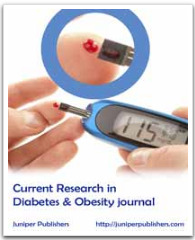
Authored by HP Gajera
Introduction
Background
Diabetes mellitus is a carbohydrate metabolism disorder of endocrine system due to an absolute or relative deficiency of insulin secretion, action, or both [1]. The disorder affects more than 100 million people worldwide and it is predicted to reach 366 million by 2030. The non-insulin dependent diabetes mellitus (NIDDM, type 2) is the most prevalent form globally which is associated with elevated postprandial hyperglycemia. The occurrence of NIDDM 2 has been shown an alarming increase during the last decade (http//www.who.Int/diabetes/en/).
Plant derivatives with reported hypoglycaemic properties have been used in folk medicine and traditional healing systems. Very few of these traditional antidiabetic plants have received proper scientific or medical scrutiny despite recommendations by WHO. Ayurveda and other Indian traditional approaches have described more than 800 plants in the Indian subcontinent, known to possess antidiabetic potentials. These require to be effectively studied and in fact only few of them have been characterized for their mechanistic action [2,3]. Pancreatic α-amylase, is a key enzyme in the digestive system and catalyses the initial step in hydrolysis of starch to maltose and finally to glucose. Degradation of this dietary starch proceeds rapidly and leads to elevated post prandial hyperglycemia. It has been shown that activity of HPA in the small intestine correlates to an increase in post-prandial glucose levels, the control of an important aspect in treatment of diabetes [4]. Hence, retardation of starch digestion by inhibition of enzymes such as α- amylase would play a key role in the control of diabetes.
The discovery of specific high-affinity inhibitors of pancreatic α-amylase for the development of therapeutics has remained elusive. Inhibitors currently in clinical, use for example, acarbose, miglitol, and voglibose, are known to inhibit a wide range of glycosidases such as α-glucosidase and α-amylase. Because of their non specificity in targeting different glycosidases, these hypoglycemic agents have their limitations and are known to produce serious side effects. Therefore, the search for more safer, specific, and effective hypoglycemic agents has continued to be an important area of investigation with natural extracts from readily available traditional medicinal plants offering great potential for discovery of new antidiabetic drugs [5]. Ponnusamy et al. [6] studied on antidiabetic medicinal plants for human pancreatic amylase inhibitory effect in vitro and found that pancreatic α-amylase lower the levels of post perandial hyperglycemia via control of starch breakdown. The probable mechanism of action of the above fractions is due to their inhibitory action on HPA, thereby reducing the rate of starch hydrolysis leading to lowered glucose levels. Phytochemical analysis revealed the presence of alkaloids, proteins, tannins, cardiac glycosides, flavonoids, saponins and steroids as probable inhibitory compounds.
Anti-hyperglycemic effect of natural phenolic antioxidants
Advanced molecular studies showed that methanol extract of black jamun plant modulate the expression of glucose transporter (Glut-4), peroxisome proliferator activator receptor gamma (PPARγ) and phosphatidylinositol-3-kinase (PI3 kinase) comparable with insulin and rosiglitazone [7]. Evaluation of black jamun containing antidiabetic poly herbal formulation in alloxan induced diabetic rats also showed significant hypoglycemic activity, positive glucose tolerance activity and reduced lipid peroxidation in various organs compared to that of the diabetic control animals [8]. Meshram et al. [9] studied on hypoglycaemic action of black jamun seeds. The possible mechanism by which extracts bring about its may be by affecting the activity of glucoamylase or by increasing the glycogen biosynthesis. Thus, the significant inhibition of glucoamylase suggests that the active hypoglycaemic compound present in methanolic extracts of jamun seeds does not necessarily require the presence of functioning of β-cells for its favourable action seen in type-I. It means the methanol extracts of black jamun seeds may act in a variety of diabetic conditions with or without functioning of pancreatic β-cells.
Hasan et al. [10] studied DPPH radical scavenging activity of black jamun seed extracted in methanol. It has been determined that the antioxidant effect of plant products is mainly due to radical scavenging activity of phenolic compounds such as flavonoids, polyphenols, tannins, and phenolic terpenes [11]. Liang & Yi [12] identified hydrolysable tannins (ellagitannins) extracted from black jamun fruit showed a very good DPPH radical scavenging activity and ferric reducing/antioxidant power. The results are promising and indicating the utilization of the fruit of black jamun as a significant source of natural antioxidants.
Stanely et al. [13] evaluated the protective effects of gallic acid on brain lipid peroxidation products, antioxidant system, and lipids in streptozotocin induced type II diabetes mellitus. The results showed the beneficial effects of gallic acid on brain metabolism in streptozotocin induced type II diabetic rats. A diet containing gallic acid may be beneficial to type II diabetic patients. Meguro et al. [14] investigated the effects of continuous ingestion of a catechin rich beverage in patients with type 2 diabetes. The significant increase in insulin level was observed to patients fed with green tea containing the catechin. Rizvi et al. [15] evaluated the effect of tea catechins (epigallocatechin gallate (EGCG), epigallocatechin (EGC), epicatechin gallate (ECG) and epicatechin (EC)) on markers of oxidative stress in erythrocytes from type 2 diabetics. The relative effectiveness of individual catechins are in the order of EGCG>ECG>EGC>EC. Higher intake of catechin rich food by diabetic patients may provide some protection against the development of long term complications of diabetes. Chlorogenic acid is a major component of coffee that may provide more of an explanation for coffee’s effect on risk for type 2 diabetes. Chlorogenic acid proposed beneficial effects on glucose metabolism. The chlorogenic acid may delay glucose absorption in the intestine through inhibition of glucose-6-phosphate translocase 1 and reduction of the sodium gradient driven apical glucose transport. In vitro studies and animal studies showed that chlorogenic acid derivates can be decreased hepatic glucose output through inhibition of glucose- 6-phospatase [16].
Jung et al. [17] investigated the blood glucose lowering effect and antioxidant capacity of caffeic acid in mice. Caffeic acid induced a significant reduction of the blood glucose and glycosylated hemoglobin levels than the control group. Increased plasma insulin by caffeic acid was attributable to an antidegenerative effect on the islets. Caffeic acid also markedly increased glucokinase activity and its mRNA expression and glycogen content and simultaneously lowered glucose-6- phosphatase and phosphoenol pyruvate carboxykinase activities and their respective mRNA expressions, accompanied by a reduction in the glucose transporter 2 expression in the liver. Zhi et al. [18] investigated the antioxidant activity of black jamun leaf extracts. Leaf extracts contained phenolic compounds, such as ferulic acid and catechin, responsible for their antioxidant activity.
Diabetes, when uncontrolled, causes dyslipidemia often followed by atherogenic abnormalities. Balasubashini [19] examined role of ferulic acid (flavonoid) in diabetes induced dyslipidemia. Study demonstrates that ferulic acid lowers the lipid levels in diabetic rats and hence prevents further complications. It has been documented that ferulic acid may lower blood sugar level of Type 1 and Type 2 diabetic mice by enhancing insulin secretion [20]. Diabetic mice was given rice derived ferulic acid for 17 days and results showed that plasma insulin level increased while blood sugar level decreased significantly compared with control [21]. Ferulic acid may be beneficial in Type 2 diabetic and for the management of diabetic complications. Hussain et al. [22] indicated that quercetin can decrease postprandial glucose level after disaccharides loading, which may be mainly attributed to inhibition of α-glucosidase as one of the expected mechanisms for the reduction of plasma glucose. This effect subsequently leads to suppression of postprandial hyperglycemia. Thus, quercetin can be considered as a potential candidate for the management of type 2 diabetes mellitus. Medicines that reduce postprandial hyperglycemia by suppressing the absorption of carbohydrates are shown to be effective for prevention and treatment of non-insulin dependent diabetes mellitus [23]. Quercetin inhibited in vitro the intestinal α-glucosidase activity [24]. It has been also assumed that quercetin activates tyrosine kinase. Phosphorylation of the specific region of the subunit in insulin receptor (including Tyr- 1158, Tyr-1161 and Tyr-1162) correlates with receptor tyrosine kinase activation and the propagation of the biological actions of the hormone [25].
Correlations between antidiabetic, antiradical and phenolic compounds
Our previous study Gajera et al. [26,27] suggested that antidiabetic activity of fruit parts of black jamun landraces was positively correlated with free radical scavenging activity, nutraceuticals profile and individual phenolic constituents. Total phenols and individual phenolics are positively correlated with antidiabetic and antiradical activities but vary with different level of significances. Individual phenolics - gallic, catechin, ellagic and ferulic acids are highly positively correlated (P0.001) with antidiabetic and free radical scavenging activity. The positive correlation (P0.01) was established for caffeic and chlorogenic acids to scavenge free radicals and α amylase inhibitory activity (antidiabetic) for methanolic extract of black jamun fruit parts. The quercetin was found only in seed and its part kernel fraction of BJLR-6 (very small size fruits) and found to be positively correlated (P0.05) with antidiabetic activity. Among the fruit parts of black jamun land races, seed exhibited maximum seven individual phenolics and total phenols, particularly in their kernel parts. Among the individual phenolics, gallic acid was most diverse phenolic constituents which significantly positively correlated (P0.001) with inhibition of α amylase activity and DPPH radical scavengers followed by catechin, ellagic and ferulic acids in different fruit parts of black jamun land races. The study explained correlation of individual phenolics including flavonoids (ferulic) with α amylase inhibition and free radical scavenging activities in fruit parts of indigenous black jamun landraces.
Muniappan et al. [28] reviewed the black jamun as an antidiabetic plant which contained ellagic acid, glycosides, anthocynine, kampferol, marcein and isoquarcetine; and halt the diastolic conversation of starch into sugar. The phenolic constituents may be contributed directly to the antioxidative action. Consequently, the antioxidant activities of plant/ herb extracts are often explained by their total phenolics and flavonoid contents with good correlation.
To Know More About Current Research in Diabetes & Obesity Journal Please click on:
https://juniperpublishers.com/crdoj/index.php
To Know More About Open Access Journals Please click on: https://juniperpublishers.com/index.php
0 notes